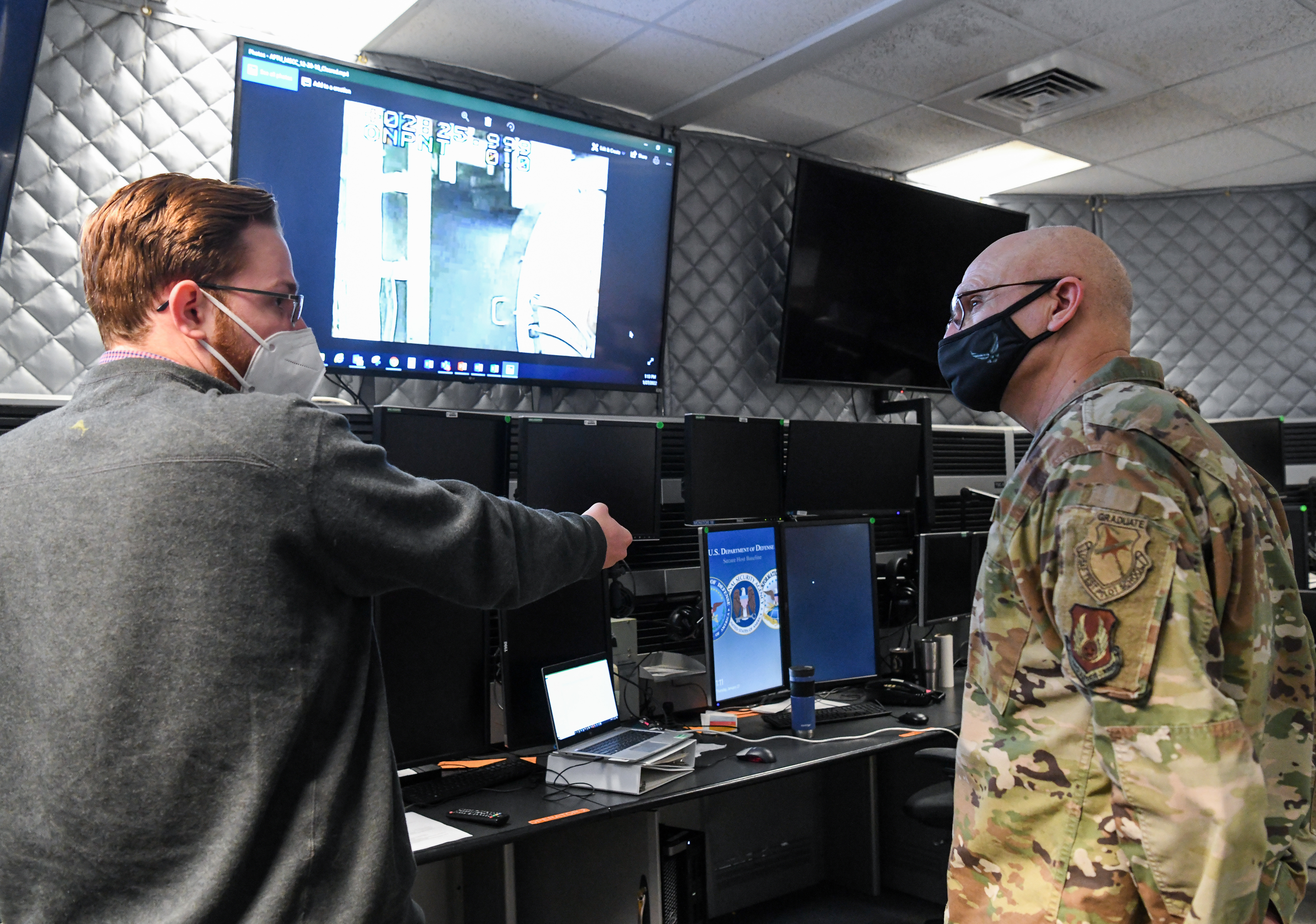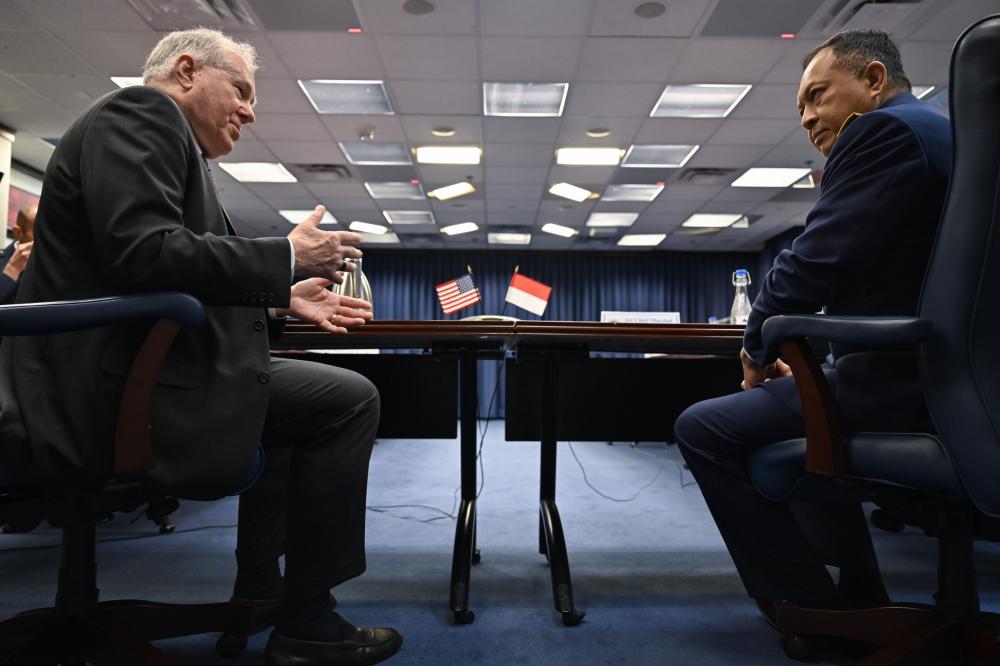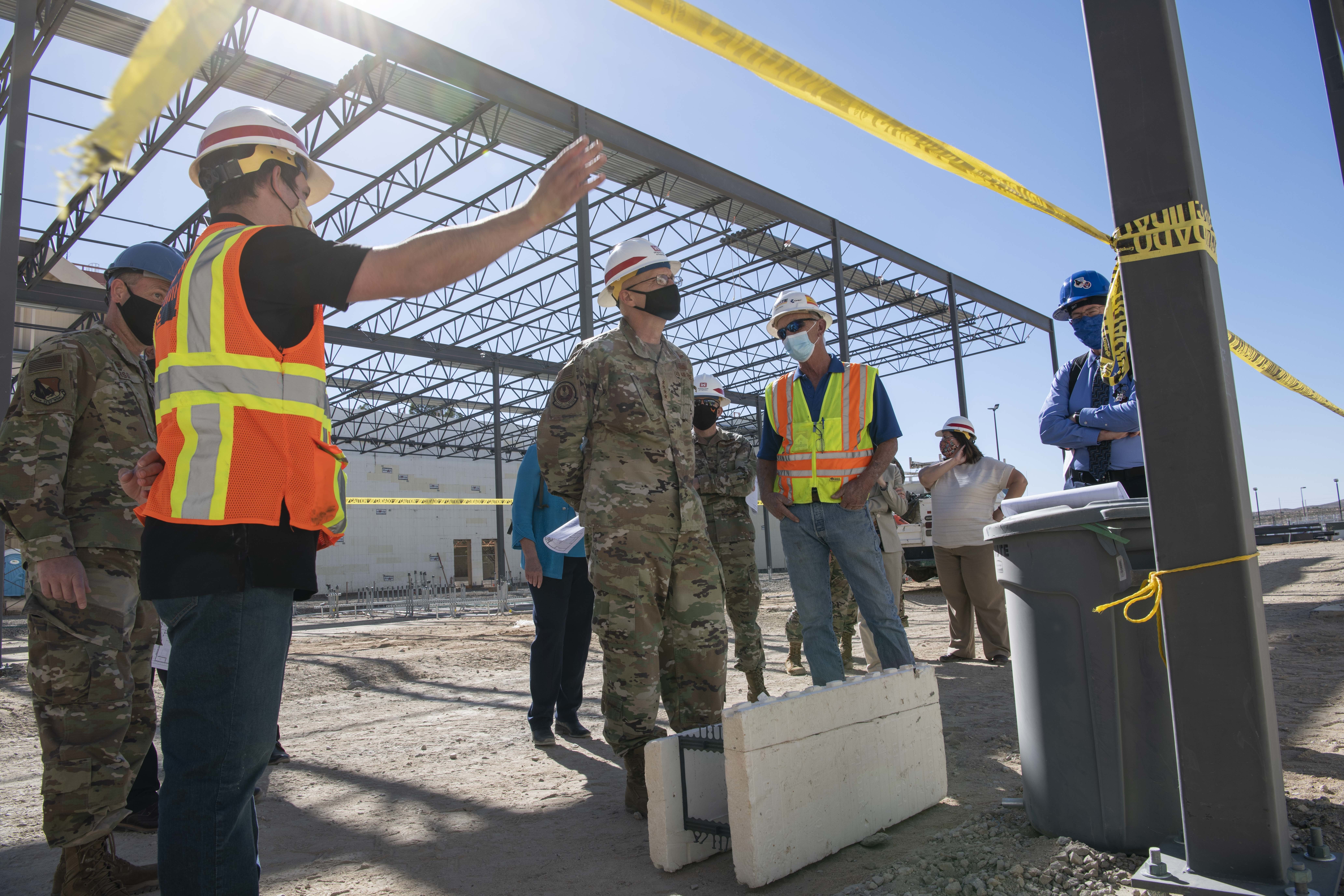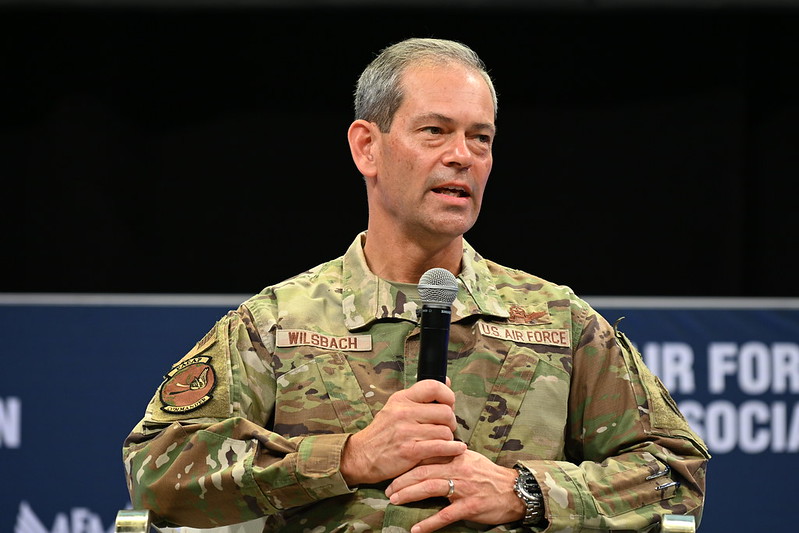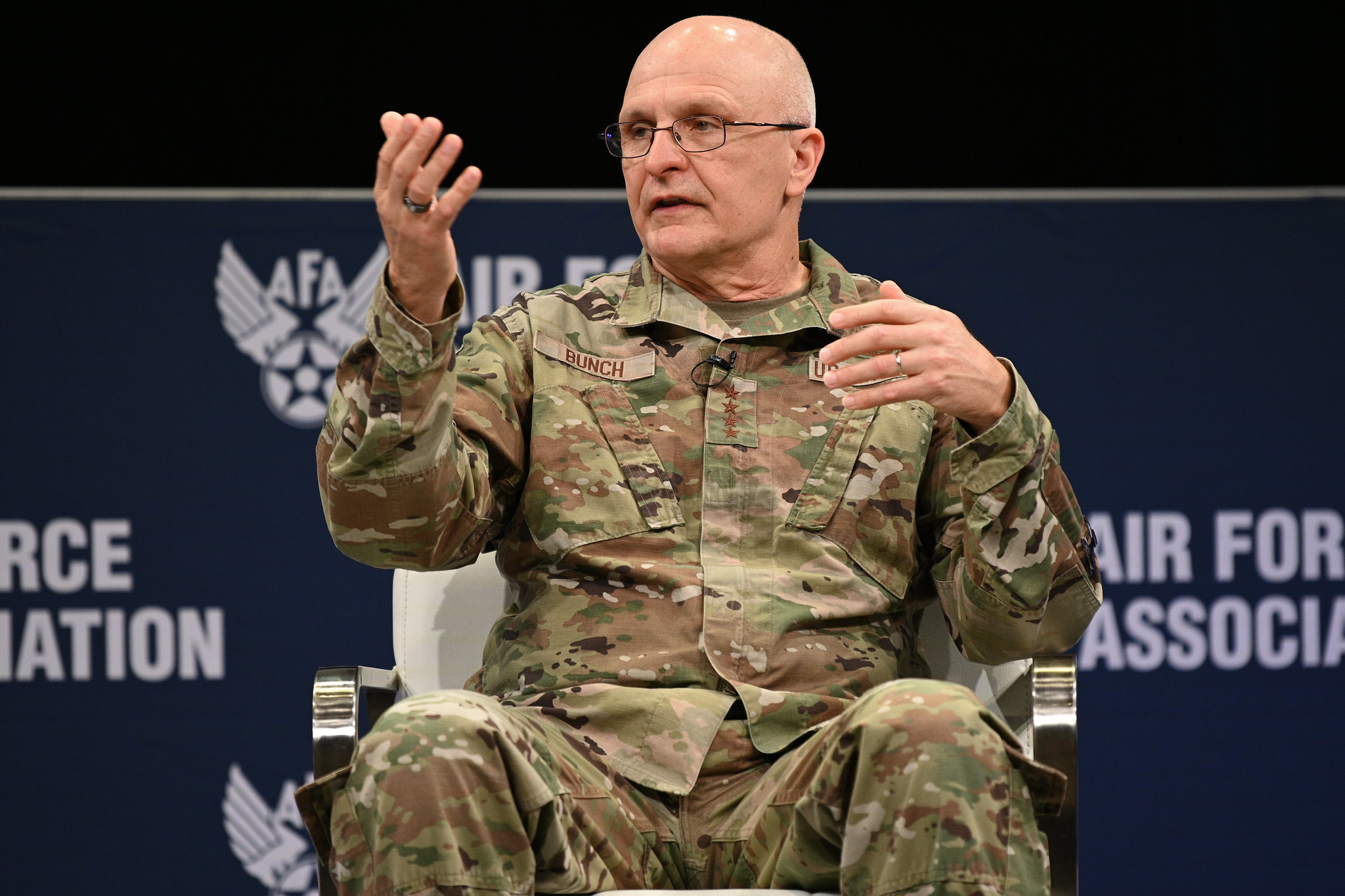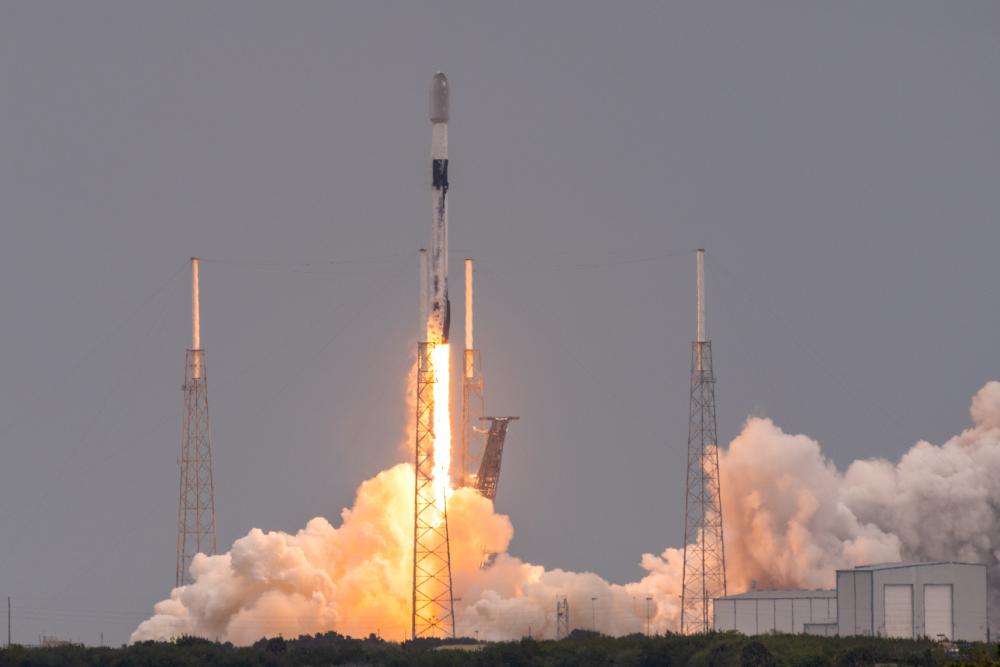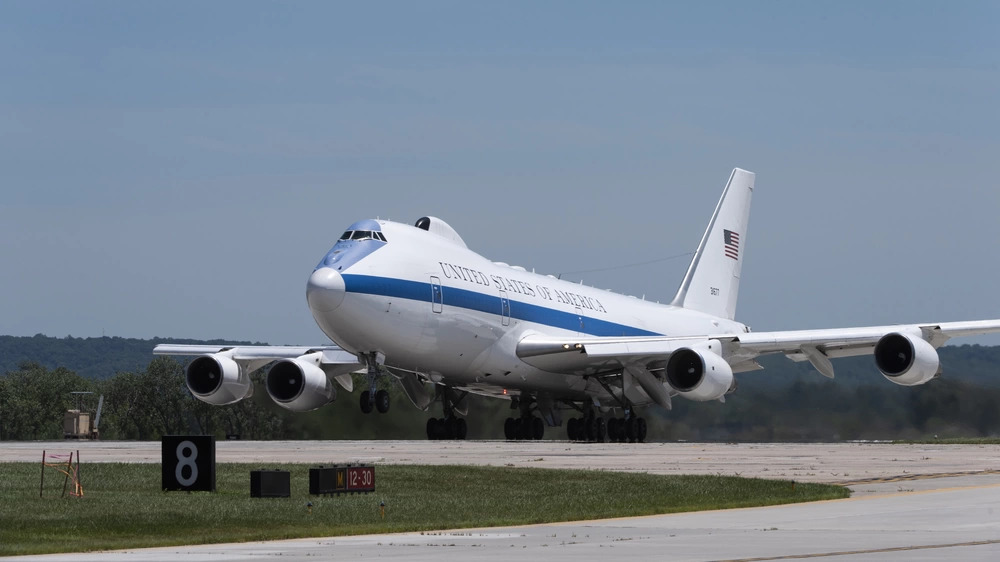Having funds available to opportunistically and swiftly buy and field cutting-edge technology “at scale”—and having someone authorized to make those calls—would help the Air Force get innovative capabilities across the so-called “valley of death,” according to the outgoing head of Air Force Materiel Command. Creating such accounts, however, would require significant changes in acquisition rules, he said.
“We’ve got to have someone making some decisions on what … we push,” said Gen. Arnold W. Bunch Jr., AFMC commander, who is retiring, in an exit interview with Air Force Magazine. Good ideas that come in from industry, or as suggestions from Airmen, need to get swift and high-level consideration as to whether “we really see [it] as something that we want to take to scale … and make those decisions as soon as we can.” He said Airmen should not have to shepherd their own ideas through the process and that if ideas come in from industry, “we owe them a timely answer as to whether we think we’re going to try to go to scale or not.” A quick review would come down to a “‘Nope, that gets off-ramped—[it’s] not ready yet. Go back and do more,’” or a “Yep, we’re going to go do it.”
To make that work, though, “I think we’re going to have to have some money immediately available,” Bunch said. “I believe we’ve got to have some flex in those areas. And that will be a culture change … to all of us that operate” in the acquisition enterprise.
“It’s not just the Air Force, not just [the Office of the Secretary of Defense]. It’s something we would all have to do. We would need to partner with Congress and everyone else to do it.” The idea would be to “put a certain amount of money into our budget … with the expectation that a certain number of things” would be chosen for a quick acquisition at scale, “with the intent to then put it in our POM [program objective memoranda] and carry it forward.”
Right now, he said, “Because money is so tight, and [because of] the way rule sets are placed, you would have to have a very specific reason you would have money there,” and there’s no way to know in advance “how many great innovative ideas, or what’s coming, in that timeframe.” This fund for opportunities “is an area that I believe could make a big difference,” Bunch said.
What he would create is “a certain amount of money, in the year of execution, that wasn’t necessarily [connected to] any specific program at the moment.” The innovation could be “a robotic process that an Airman or a unit has come up with, or … something that some small business has come in with, that we look at and say, ‘we can immediately apply that’ and save manpower, or save man-years of work.” The quicker it comes into being, the sooner the savings or operational improvement would be felt.
Similarly, Bunch thinks cutting-edge technology could be brought to the field faster if “we … lay in money to start programs of record a little bit earlier, before they completely prove themselves. And then we would need the flexibility to pull that money to other Air Force needs if it didn’t develop the way we needed.”
That would require a change to acquisition rules, he said. Such an approach would require Congress to write a certain number of blank checks for programs that don’t exist at the time a defense budget is signed into law. However, the process of fielding a response to even an urgent requirement can take years, and there may be no standing requirement that the new idea addresses.
“The way our budgeting system is set up right now,” he said, if a seemingly good idea didn’t work out, the money could not be applied to a different approach. “Those dollars would be taken away and put on something else,” he said.
A good start would be to “do something small and demonstrate that we can do it and be transparent with everybody involved. And then go from there,” Bunch suggested.
This would not be a way to buy an entire new aircraft or weapon system, he said, but rather for lower-level acquisitions.
The idea is already being put into effect at the OSD, he said, noting that the head of defense research and engineering, Heidi Shyu, is “asking for money to be put into her account … so that innovative ideas can come in, [and] they will fund them for a period of time to see how they work. ”
Bunch would like to be able to quickly produce in quantity “once it works.”
The “valley of death” was a term coined to describe the difficulty in “pushing” valuable new ideas or technologies that emerged from research and development to operational status, since the acquisition system depends on a “pull”—or request—from combatant commanders or field commands to fill a need or gap.
Bunch said Congress’ willingness to let the services use “other transaction authorities” for rapid prototyping of systems has been “another tool in our tool chest,” which has mostly worked out well.
“It’s a good thing to have, and do things a different way,” he said, but “It’s not the be-all, end-all answer to everything. It is a means to do the contract business in a different manner.”
He noted that “some of our more risk-averse folks were a bit reluctant to go down that path,” but now that the acquisition workforce has been trained on OTAs, they are “more comfortable with that as a tool … so I do believe that’s helped us.”
Bunch said he’s supported unconventional approaches to acquisition if they could speed things up or save money.
“The line I’ve used for the past seven years is, if you take educated risk, I’ve got your back.” He defined “educated risk” as soberly “thinking through” the process and deciding that an unconventional approach is worth trying.
“If you’re a contracting officer, and you’ve awarded a bunch of contracts, and think you want to do an OTA because you thought your way through it, and something happens, we’re going to support [you],” Bunch said. “We’re going to make sure you don’t get slammed for taking that risk.” If contracting officers get punished for taking measured risk to speed things up “then all those innovative ideas that the rest of us have been trying to go do” will evaporate.
“We can ruin all that goodwill we built up … We don’t want to go do that,” Bunch said, adding that this is not a policy that will evaporate when he’s gone.
“I believe everybody’s embraced that,” he said.
